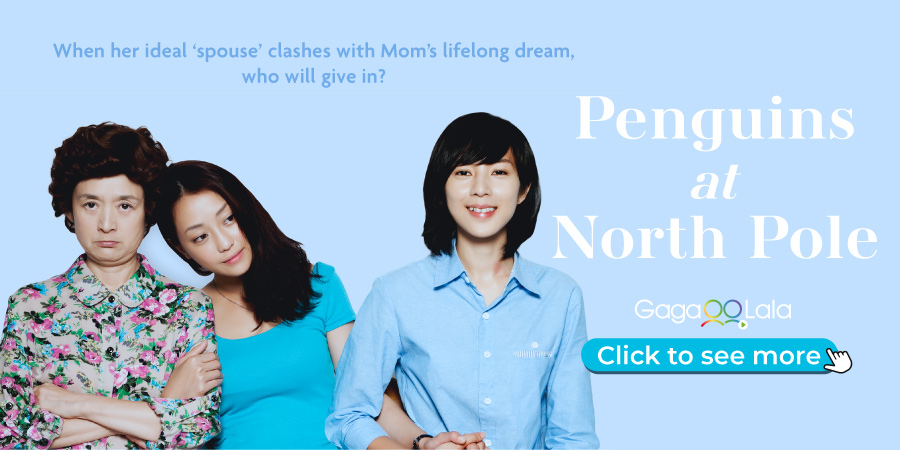Watch Carol on GagaOOLala.*
Adapted from a novel from Patricia Highsmith (1921-1995) originally known as The Price of Salt (1952), Carol (2015) comes back to life, this time on the big screen, more than half a century later. Although it is easy to see the love affair between the two co-protagonists and the conservative patriarchal society as the main topics in the story, resonating universal human emotions are the underlying message.
New York in 1952. Department store clerk and amateur photographer Therese Belivet (Rooney Mara) finds herself attracted to a beautiful and generous customer, Carol (Cate Blanchett). After they start to regularly meet each other, Carol's flirtatiousness makes Therese become intoxicated with her. However, Carol’s husband (Kyle Chandler) will ask her to choose between keeping her affair with Therese going or the shared custody of their daughter. Their love seems to have no future.

Patricia Highsmith author of the novel The Price of Salt. / Source: ellmaker
Highsmith was already a well-known author when The Price of Salt was published, due to the success of her first novel, the psychological thriller Strangers on a Train (1950). To avoid being tagged a lesbian-book writer, a genre completely oppositional from her previous work, she decided to sign the book under the alias of Claire Morgan. The novel is based on Highsmith personal experiences while working in a department store on Christmas 1948 and the subsequent loss of her daughter’s custody.
Later on, Phyllis Nagy, a lifelong friend of the author, decided to adapt the book into a script, a difficult task considering that the novel is narrated from an extremely subjective point of view. The first draft of the script almost two decades later in 1996.

The Price of Salt book cover. / Source: thenationalbookreview
Originally the drama was scheduled to be directed by British director John Crowley, known for the film Brooklyn (2015), and to be starred by Cate Blanchett, who also acts as executive producer, and Mia Wasikowska. But due to schedule conflicts from both Crowley and Wasikowska, Haynes and, later, Mara took over and turned out to be a perfect fit for the unique sensibility of the original material.
Influenced by Douglas Sirk’s classic melodramas, especially All That Heaven Allows (1955) and with previous experience narrating stories of forbidden loves during the conservative 1950s, as he did in Far from Heaven (2002), Todd Haynes felt an instant connection with the story. An openly gay man, Haynes also confessed that the possibility of collaborating with Cate Blanchett was one of the main reasons that attracted him to the project.
Blanche, as usual, is extraordinary in her role as the daring Carol, but Mara is the real highlight of the film, in her journey as Therese from blushing innocence to longing.

Rooney Mara, Todd Haynes and Cate Blanchett. / Source: BeautiMode
The film, a new classic in the history of queer film, will naturally be compared to other gay movies, especially to the widely acclaimed Brokeback Mountain (2005) and Blue is the Warmest Color (La Vie d’Adèle, 2013).
Brokeback Mountain, as Carol, was set in the conservative rural American 1960s. The original author, Annie Proulx, was also inspired on a contradictory character, a lonely old cowboy. Even though Carol is set in an earlier time, unlike Brokeback Mountain it was set in a big metropolis were society tends to be more open minded. However, both films show the repression minority groups have suffered for years within the American society
Blue is the Warmest Color is a semi-autobiographical novel by author Julie Maroh also about two lesbians from different social classes. Although the film's portrayal of social contrast is less obvious, we can see how some of the conflicts between the two girls implicitly arise because of their different backgrounds. In the film, Carol and her also lesbian friend Abby (Sarah Paulson) are in a privileged economical position but they still develop a relationship with Therese, one of the positive notes in this story.

Blue is the Warmest Colour, a semi-autobiographical novel by author Julie Maroh. / Source: Bleeding Cool
Haynes and Naggy take a different approach to the story by using flasbacks. Haynes has pointed out to David Lean’s classic masterpiece Brief Encounter (1945) as his most direct influence when shooting the film. Also, the device of having the main female character recalling her past summons the spirit of Ang Lee’s Lust, Caution (2007), and even using the same visual motifs of silk curtains. The plotline with the two protagonists running away is considered a reference to another forbidden love, Lolita (1955), a famous influencing novel ny Russian-American writer Vladimir Nabokov (1899-1977) and, perhaps, to the feminist gem Thelma & Louise (1991).

Thelma & Louise / Source: Harper's Bazaar
With the outstanding attention to detail that characterize him, Haynes has done a superb job in accurately bringing the 1950s America to the screen. With the help of her old-time partner, art designer Judy Becker, and costume designer Sandy Powell, and with the use of ultra-16mm championed by DP Ed Lachman, Haynes delivers a nostalgic beauty to every frame.
Every element in the film works towards this subtle beauty of time past, including the OST composed by Carter Burwell, long-time collaborator of the Coen Brothers, who had already collaborated with Haynes in Velvet Goldmine (1998) and in the series Mildred Pierce (2011).

Director Todd Haynes used ultra-16 mm film to create Carol’s retro atmosphere. / Source: Screen Rant
As in the original title of the novel, it is not until Therese tastes salt (meets Carol) that she starts living her life to the fullest, but this encounter that has brought her passion and excitement is also darkened by pain when the two of them are forced to separate.

When Therese meets Carol she finally tastes the flavor of life. / Source: Youtube
When the original novel was republished in 1990, Highsmith finally changed its title to Carol since the story is told from Therese’s perspective and it describes what she wants more than anything. Although Naggy switched slightly the point of view in the screen adaptation, Carol’s persona still remains Therese’s object of desire. A goal that she pursuits right to the very end in an unusual happy ending for this queer story, something extremely unusual for the media to portray back in the 50s when the few stories that portrayed homosexual characters ended in tragedy. Carol brings the past to the present thanks to its aesthetics and classic melodrama inspirations but it is, nonetheless, pure avant-garde.
Watch Carol on GagaOOLala.*
Author: George
*Film only available in Taiwan








